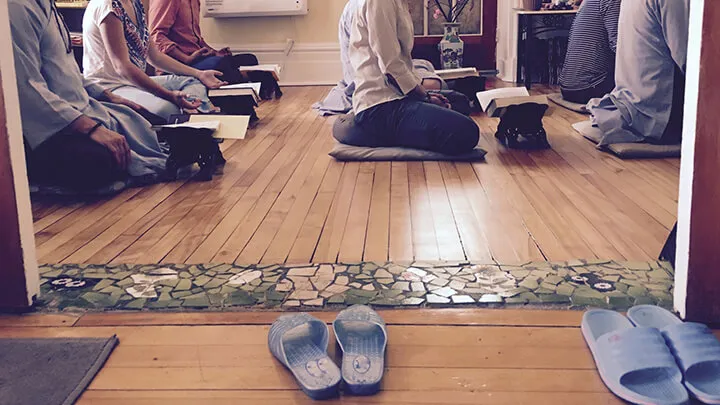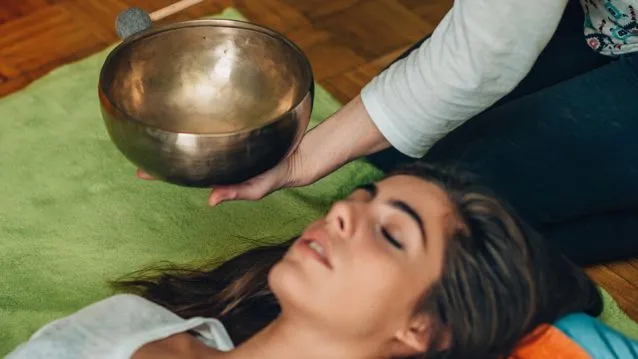I have always been an anxious person. When I was a little kid, I would stay awake late into the night, huddled in my bed begging the shadows on my walls not to hurt me. When I was in middle school, I became afraid to travel anywhere — even a 20-minute drive in the car was nearly unbearable. My poor parents. I could go on, but suffice it to say that dealing with anxiety has always been part of my life.
For a long time, I didn’t really know how to cope with my anxiety. I would just deal with it as best I could — trying not to freak out, freaking out, sweating, muttering to myself, panicking until the feeling passed. I did not have control. Then, when I was around 17, I discovered meditation when a class I was taking in high school visited a Theravada Buddhist forest monastery. At the time, I thought it was very interesting, but I did not start practicing regularly.
I will always remember my introduction to meditation, however. Over the years, it has vastly improved my life, and made my anxiety much more manageable.
Discovering guided meditation
After my brief introduction to meditation at the forest monastery, I went back a couple of times with friends and joined the guided sessions. It was incredibly tranquil. After meditating with a group of people for half an hour, I felt centered in a way that I had not experienced before. However, since I only went twice, the centered feeling did not stick, and was soon replaced again by the anxious thoughts screaming inside my mind.
When I graduated high school, I decided to make a big life change. I moved from the Midwestern United States to Ottawa, Canada, where I was planning to go to university. I took a year off between high school and university, and during this year, I spent a lot of time walking around the city alone. During one of my walks, I saw a flyer on a street posting board about guided meditation sessions with a Theravada Buddhist monk. I remembered how tranquil meditation at the monastery had been and decided to attend.
The guided meditation process

The first evening I attended one of these sessions, I walked into a large room at a community center where a couple dozen people were seated either in chairs or on the floor. There was a small jar for donations at the door, but no fee was required, and it was made clear to me that I didn’t need to be a Buddhist, or a member of anything, to attend meditation. That was a relief, for I am not a Buddhist, and I had hardly any money at the time.
Once I was seated on the floor, a monk came to the front of the room and explained that for the first half of the hour, he would be guiding us into meditation. The second half of the hour was to be silence. Before we began, we all chanted together in a mantra focused on loving-kindness — compassion for ourselves and all creatures. For the guided meditation, the monk coached all of us on how to relax our bodies, focusing on one part at a time. He also guided us in paying attention to our breath, and on how to let distracting thoughts pass through us without “sticking.” Afterwards, we all meditated in silence for 30 minutes.
Walking home from my first meditation session in Ottawa, I felt deeply tranquil. I was present, I was focused… and my mind was not racing with anxiety. It was beautiful. I went back to these sessions fairly often, sometimes bringing friends along with me. The more I went, the easier it became to relax, breathe and simply “be” with myself. The guidance that the monk provided really helped me a lot, as did the atmosphere of like-minded people around me, all communing with themselves in the present moment.
While I cannot say that guided meditation “cured” my anxiety, it really has worked wonders. When my mind starts to race nowadays, I am able to relax my body, bottom to top, switch my awareness to my breath, and slip into the present moment much more easily. I no longer live in Ottawa, and have not found another guided meditation session that I attend, but the techniques and perspectives that I learned during my time attending gave me the ability to effectively practice meditation at home. The more I meditate, the less anxiety I feel.
Sometimes I don’t do it as often as I should, but whenever I return to it, my anxiety improves, and I am able to just be. If you have never meditated before, or if you’ve tried and it didn’t stick, I highly recommend finding a guided session to attend. It really can quiet the churning mind, no matter how violently it churns.
Choosing the right guided meditation for you
Different styles of guided meditation work best for different people — you have to find one that’s right for you. For me, I really enjoyed my experience with Theravada Buddhist meditation, a Thai tradition based around loving kindness. It’s a very simple, basic form with no “frills” attached, just some relaxing rhythmic chanting and a focus on pure being. Others may enjoy meditation sessions that include visualization, yogic meditation or even walking meditation. Check out this guide to learn about some of the different types.
Look around your community to see what types of guided meditation are available. If you live in a more rural area, you may need to travel a bit, but if you find the right type of session for you, it will be worth it. Ask around for recommendations, do some research, and you’ll be sure to find the perfect fit. Even if you have to try several types of sessions to find the right one for you, don’t give up. Peace of mind is right around the corner.
— Tanya Mead

